The attack on one of the best known Pakistani journalists, Hamid Mir, has only reaffirmed Pakistan's reputation as one of the most dangerous places in the world for journalists. Mir, who took six bullets, barely survived the well planned ambush carried out in broad daylight on a busy road in Karachi when he was heading from the airport to his office. The attempt on his life created a veritable storm in the Pakistani media, more so after his brother alleged that the ISI chief, Lt. Gen Zaheerul Islam, was responsible for the attack.
According to reports in the Pakistani media, Mir had confided in his friends and family about the threats to his life from ISI and had even recorded his testimony on paper and in a video which was to be made public if something happened to him. Naturally, as soon as news of the attack broke, fingers started being pointed at the ISI. The military spokesman was quick to condemn the incident and deny any involvement of the ISI in the incident. But cut to the bone by the audacity and temerity of the journalists who were accusing the ISI of being behind the attack, the intelligence agency, which is a virtual state within a state, unleashed its army of plants in the media to launch a fierce counter offensive, not just against Mir (accusing him of all sorts of anti-national activity) but also the media group –Jang/Geo – that he works for. For the rival channels, this was a Godsend opportunity to pull the Jang Group down from its pedestal as the most popular and powerful media group in Pakistan.
For some months now, the ISI has been using a rival channel ARY (owned by a dubious UAE based Pakistani-origin businessman who is alleged to be hand in glove with Dawood Ibrahim and involved in all sorts of shady deals, including Hawala and gold smuggling) to target Jang, its owner and its journalists. After the Hamid Mir attack, other channels like Express (owned by the Lakhani group) have also jumped into the act. The idea is to severely damage, if not destroy, Jang’s credibility and popularity and at the same time increase their own market share at Jang’s expense. The icing on the cake will be currying favour with the real power centre in Pakistan – the Pakistan Army.
The Jang group has faced tough situations in the past, but always came out winner. This is however the first time that it is pitted directly against the military. The tiff with Musharraf in the last few months of his regime cannot be compared with what is happening today when it is facing a sustained and vicious campaign entirely backed by the dirty tricks department of the military. To an extent, the Jang group must share the blame for what it is facing. Over the years, it has carried out exactly the same sort of campaigns against civilian governments, weakening them to a point where they became pushovers for the ‘establishment’. The only time they failed was with Asif Zardari who despite the unremitting and unfair hostility of the Jang group managed to ride out all the storms that this media powerhouse created. In the case of the Nawaz Sharif, the Jang group was clearly seen to be leaning in support of the PML (N) government by demanding greater accountability of the army and was not just backing the prosecution of the former dictator, Pervez Musharraf, but also raking up other issues that rankled with the Men in Khaki. Perhaps, with the Jang group starting to believe that it could make and break (and even save) governments, the Pakistani establishment had already made up its mind to disabuse it of this notion and de-fang it. The charges levelled against the army and ISI in the Hamid Mir case will only give further impetus to the plan which is already underway.
What makes the attempt on Mir’s life so sinister is that it comes against the backdrop of mounting tensions between the civilian government and the military. Apparently, the army was pretty cut up with the government on the issue of former dictator Pervez Musharraf’s treason trial, the peace process with the Pakistani Taliban and the trade deal that the government was all set to sign with India. Things got a little tense after some rather strong words were used by cabinet ministers against Musharraf, which the media twisted to present as though these were aimed at the army. Adding further fuel to fire, some TV channels started playing an eight year old fiery speech of the Defence Minister, Khwaja Asif, in which he had railed into the military for meddling in politics and taking away the Lion’s share of the national cake without having anything to show for it.
Things seemed to have cooled down a bit after Prime Minister Nawaz Sharif visited the Pakistan Military Academy in Abbottabad and expressed his confidence in the army and held up the Army Chief, Gen Raheel Sharif, as a role model for the newly commissioned officers. But the attack on Mir, coupled with the allegations against ISI, seems to have muddied the waters once again. Although Nawaz Sharif has set up a judicial commission of inquiry, the Mir case threatens to snowball into a test case for establishing civilian supremacy and making the military accountable. However, if Nawaz Sharif tries to brush this under the carpet, and the army continues on its offensive against those who question its dubious policies as well as its monopoly on defining national interest, then all the tall talk of civilian supremacy will remain just that. Already, the government, under pressure from the army, has retreated on the issue of opening trade with India (which isn’t such a bad thing from India’s point of view because of the sort of concessions which the Manmohan Singh government had given in return for getting a not quite MFN status). Even on Musharraf, there seems to be a move to let him off the hook and allow him to flee Pakistan. If now the government backs down on getting to the bottom of the attack on Mir, then it will be, for all practical purposes, reduced into a glorified municipality, like its predecessor. It may survive in office for a full term, but wield no real power to take any important decision, unless this is endorsed and sanctioned by the military.
Mir is of course not the first prominent journalist to come under fire, nor will he be the last. Just a couple of weeks earlier, another well-known journalist Raza Rumi escaped by the skin of his teeth after his car was ambushed in Lahore. Raza’s driver died in the incident and he has reportedly left Pakistan. Although in Raza’s case, the Taliban (through one of their affiliated organisations, the Sunni sectarian Lashkar-e-Jhangvi) are believed to be responsible, a number of other journalists have claimed threats from state, quasi-state and non-state actors. Interestingly, the ideological persuasions of the threatened journalists cover the entire spectrum of opinion. In other words, it is not just liberal people like SAFMA Secretary General Imtiaz Alam and columnist Kamran Shafi, but also Taliban advocates and sympathisers like Ansar Abbasi and Ahmed Noorani who have received threats, from both the military and the militants. Hit lists containing the names of journalists have also been floating around for some time now. But more than the threats, which are a professional hazard in a country as disturbed, divided and intolerant as Pakistan, it is the sheer impunity with which journalists are threatened and targeted that exemplifies the dysfunctional nature of the state and its institutions. Nothing illustrated this fact better than the utterly useless report of the commission that investigated the murder of journalist Saleem Shahzad, who is also believed to have been killed by the ISI after he published a story that the Al Qaeda had infiltrated the Pakistan Navy.
Like Shahzad, Mir had frequently been crossing the unwritten red lines of the military by highlighting issues like the enforced disappearance and extrajudicial killings by the army and paramilitary forces, the human rights violations in Balochistan, the need to prosecute Musharraf, the rising civil-military discord etc. The problem was not just with the stories he was covering but also the fact that Mir thought he had become too big to be touched. This hubris was his undoing, as it has been of scores of journalists before Mir who thought that their prominence put them out of harm’s way. In Mir’s case, his past must also have gone against him. He was at one time seen as a blue-eyed boy of the ISI (his detractors claim he was on the payroll) and an Urdu paper he used to edit some years back was alleged to have been funded by the ISI. What is more, he used to espouse the cause of Jihadist terrorists and had developed close links with them. He also had a very rabid stance on India and Kashmir. When such a person tries to assert his independence, his former patrons are bound to be furious and the attack on him is likely to have a ‘salutary’ impact on other journalists who were outspoken, something that is already becoming apparent in the sort of guarded statements and comments that Mir’s colleagues have been making on TV and in the print media.
It wasn’t, however, just the military, but also the militants who were reported to be gunning for him. Although he was quite adept at walking the tight-rope on the issue of Taliban, there were times when he took positions that didn’t go down well with the Islamists. While the Tehrik-e-Taliban Pakistan (TTP) has denied any involvement in the attack, there are some unconfirmed reports that the Punjabi Taliban have claimed responsibility. But this claim doesn’t appear to be very credible because Mir is known to have close links with the Punjabi jihadists, something that came out clearly when a tape emerged of a conversation between him and the Punjabi Taliban discussing the links of a kidnapped former ISI official, Khalid Khwaja, with the CIA. Khwaja was later shot dead by the Taliban after Mir virtually pronounced a death sentence on him by declaring him a CIA agent. If the Punjabi Taliban have now launched this murderous attack on Mir, then it would mean that there has been a big break between Mir and the so-called mujahideen.
Although the involvement of the TTP or its affiliates cannot be completely ruled out, the circumstances surrounding the attack on Mir shifts the needle of suspicion away from them. Despite their strong presence in Karachi – they have claimed responsibility for at least three or four attacks on media houses like Express and AAJ in recent months – for the Taliban to target an Islamabad-based Mir in the port city would require an intelligence and operational network capability which is probably out of their league. But if indeed it was the Taliban that carried out the attack on Mir, then it means that Pakistan is in far more serious trouble than what it is apparent. Apart from the Taliban, the ISI mouthpieces in the media have been quick to blame India for the attack. Some of these loonies have also named CIA and Mossad. Clearly, the intellect and worldview of these characters (which includes fairly senior retired military officers) is based on Bollywood masala movies like Ek Tha Tiger and Agent Vinod. Even more hilarious was the bizarre theories that some of the ‘analysts’ came up with: Mir was dubbed a RAW agent who was shot because he had outlived his usefulness; one genius morning show anchor even doubted that he was injured; another ‘analyst’ asked whether he staged the incident himself and accidentally got shot more than planned; yet another blamed the Jang/Geo group for the attack so it could paint the ISI in lurid colours!
More seriously, the fact that ISI touts have been using this opportunity to train their guns on India, their favourite whipping boy, raises serious questions about all the talk of the army being on the same page as the civilian government on the issue of improving relations with India. For some months now, known military mouthpieces have been carrying out a vitriolic and virulent campaign against India and have been taking pot shots at the Nawaz Sharif government accusing it of a sell-out. While the Manmohan Singh government, as is its wont, remained somnolent on this issue, what is surprising is that the so-called well informed Indian analysts on foreign affairs have continued to delude themselves that Pakistan has changed. The fallout of the Hamid Mir attack should serve as a reality check to all these Indians about how nothing has changed in Pakistan.
Published Date: 24th April 2014, Image source: http://news.bbcimg.co.uk

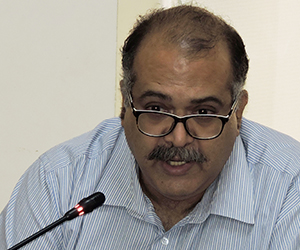
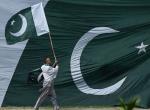

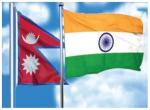
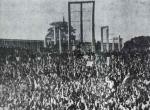
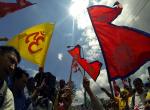

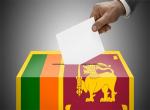
Post new comment